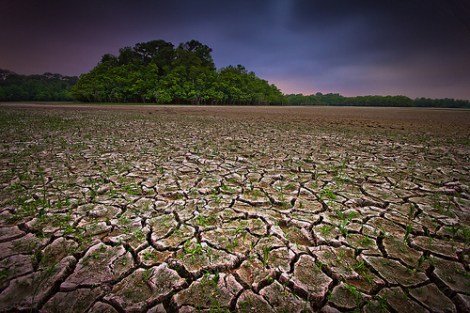
Your obligatory drought photo. (Photo by Jeff Reid.)
Earlier this year, the government projected that the nation’s economy would expand at a rate of 1.7 percent during the second quarter. It didn’t — and you can blame the drought.
From the Washington Post:
The overall economy grew at a disappointing 1.3 percent annual pace in the April through June period, down from the government’s previous estimate of 1.7 percent growth. Roughly half of that decline came from a sharp fall in farm inventories. Crop production declined $12 billion over the quarter, data showed, “due to this summer’s severe heat and drought.” …
Some analysts saw this as good news, arguing that the drought-induced slowdown will only prove temporary. “Don’t panic,” cautioned a research note from Capital Economics. The weak patch, the firm argued, “will eventually be reversed when the drought abates.”
That 1.3 percent is slightly misleading; the growth was actually 1.25 percent.
The note of optimism at the end there is tempered in the Post article itself. The effects of the drought are far from over, and the slowdown is certainly broader than just those areas affected by the drought.
But perhaps the most important thing to note is what this unexpected drop means for future climate stresses. A report we covered yesterday suggests that we’re already seeing an impact to the GDP of nearly 1 percent annually from climate-related causes. Last quarter alone, it was nearly half a point. If the drought is directly tied to the warming climate — which a) seems obvious and b) seems obvious to scientists — it means that we can anticipate similar droughts in the future with similar economic impacts.



